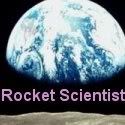RS Classic: Remembering NASA’s tragedies - Columbia Accident
>> Tuesday, February 1, 2011
Yes, I'm still shut down, but this is an important week for NASA, something we all must remember lest it happen again. Today is the anniversary of the Columbia break up during reentry and a post I wrote two years ago.
This is the hardest anniversary for me. Not that the others weren’t just as tragic, just as painful, that those lost weren’t just as brave and their deaths just as untimely. But I wasn’t even born when Apollo 1 burned so horribly. And I was just a kid in college when Challenger was torn to pieces. I wasn’t responsible.
But STS-107 was my flight. I was the EVA Safety Flight Lead for this flight. I knew the crew personally. I knew the team supporting them. I’d watched them practice in the Neutral Buoyancy Lab. I was there as the flight went through delay after delay. I went in the Mission Evaluation Room (one of the back rooms at Mission Control that supports “the Front Room”) and spoke to the folks manning the safety console every day. There were no scheduled EVAs so I wasn’t working shift. In fact, unless a contingency EVA was needed, neither was I. But I checked in physically at least once a day.
And I never saw this coming. I never heard any of the feverish concerns going on in different areas. And, sadly, I wasn’t even watching the landing. After all, nothing had gone wrong.
I was actually sleeping in, that morning of February 1, 2003. My husband of only a few months had (and this never happens) gotten up early that Saturday morning to watch cartoons. I was barely pregnant at the time - I don’t think I even knew it yet - and was feeling lazy. My daughter was at her father’s house that weekend. And Lee called out to me from the living room. “Uh, hon, I think the Shuttle just disintegrated.”
“Don’t even joke about that,” I snapped.
“I’m not joking.”
I may have mispoken when I said I never saw it coming. I had dreamed of it and it was one of those extremely rare dreams of mine that I remembered: a Shuttle coming in and breaking into fiery pieces. Whatever dreams I might have generally, I have no remembrance of them when I wake up. But this one, I remembered.
I had been worried about a potential risk. The program and my management had become comfortable with what they knew. I had not. But I had moved on to a different area and only kept track of what was going on sporadically. And I had dreamed of just such a disaster.
Of course, there is considerable evidence that the culprit that damaged the sensitive RCC panels was foam, rather than what had worried me, but that didn’t make it better. We’d been hit by foam repeatedly over the years and had talked ourselves out of worrying about it. We saw the hit before we landed, and we didn’t do more. All of this is well documented in the CAIB report . We fell into the same trap and the same causes culture-wise were cited in the CAIB report that we had heard in the Rogers Commission report from Challenger.
When Columbia reentered, the plasma began burning through the wing, first tearing off the protective RCC panel, then tearing through the structure, hydraulics and wiring, even the tire, behind it. In minutes, the Orbiter began to break up and rain debris over Texas and Louisiana.
To be honest, I’m not sure that we could have saved this crew if we had recognized the danger before they came down. I know we would have tried, would have pulled out all the stops, killed ourselves to save them if we had known what was to happen. I believe that absolutely. But, and this is the lesson we need to take forward into our future endeavors, the best way to have saved them was to keep this from happening.
We learned a great deal in the years that followed this tragedy, more about the materials we use to protect the Shuttle and the limitations and capabilities we have of bringing the Shuttle down safely if something like this ever happens again. And we know more about the risks that scared me and about the foam and ice on the ET and we have steps to address that, too.
Seven Astronauts paid for that lesson: Rick D. Husband, William C. McCool, Michael P. Anderson, Ilan Ramon, Kalpana Chawla, David M. Brown, and Laurel Clark. I must also note two others who died during recovery efforts: Jules F. Mier Jr. and Charles Krenek
Have we learned enough to preclude a recurrence? I don’t know. I hope so. I hope we tuck the lessons like Apollo, Challenger and Columbia in the corner of our minds whatever else we do and we resolved “Never again!” I don’t want us to grow complacent that such tragedies are inevitable, the price of going where no man has gone before. I want us to kick and fight and claw our way forward, unwilling to give an inch to fate, unwilling to accept defeat and any more deaths.
In the end, time will be the true judge on how well we have learned from these tragedies. Here’s hoping this is truly the last for human spaceflight. According to our previous Space Shuttle Program Manager , we still have work to do.





.jpg)











.jpg)



20-20 hindsight...